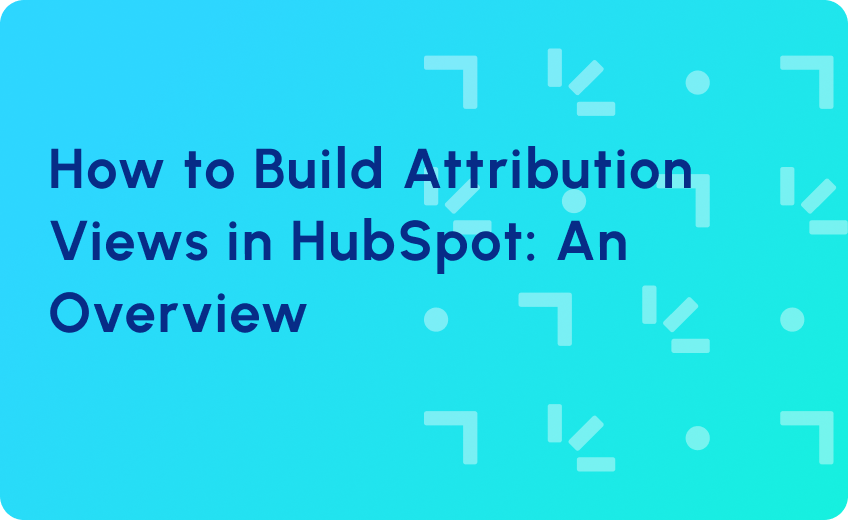
HubSpot RevOps Implementation: What Most Teams Get Wrong
Many teams invest in HubSpot, thinking it’ll instantly smooth marketing, sales, and revenue workflows. But a few months in, they’re still chasing leads in spreadsheets, assigning MQLs manually, and arguing over attribution models that don’t match the sales pipeline. Is your team the issue? Is it HubSpot? No. It’s the way HubSpot is implemented: without a RevOps mindset that connects people, processes, and platforms. With strategic HubSpot RevOps implementation, you align lifecycle stages, automate handoffs, and give every GTM team a clear view of what’s working. As a result, you get a clean funnel, accurate reporting, and zero ambiguity about where revenue is coming from.
Let’s break down how to do it and avoid the pitfalls that slow most teams down.
What Really Is HubSpot RevOps Implementation?
More than a tech setup, a true HubSpot RevOps implementation integrates strategy with systems. That means:
- Structuring your HubSpot lifecycle setup to reflect real buyer journeys
- Mapping lead statuses that make sense to both SDRs and AEs
- Building scalable workflows that eliminate busywork
- Syncing cleanly with tools like Salesforce
- Creating dashboards that track revenue, not just opens or clicks
Unlike siloed setups that stop at MQLs, HubSpot RevOps consulting focuses on full-funnel visibility and GTM alignment.
Pro tip: You can even do this in phases. But foundational lifecycle mapping and lead status logic should be done upfront. Without that, your later workflows and reporting will break down.
The 6-Step Process We Use to Get RevOps Right in HubSpot
- Deep-Dive Audit
We start with an honest review of your:
– existing data
– lifecycle definitions
– attribution gaps
Why? Because most RevOps issues stem from poor setup, not team execution. - Lifecycle & Lead Status Mapping
We clarify what each HubSpot lifecycle stage means and align HubSpot lead status mapping to sales motion. That includes:
entry/exit criteria
automation triggers
handoff points
But do we need both lifecycle and lead status? Yes. Lifecycle tells you where a contact is in the funnel. Lead status tells you what sales is doing about it. Both are critical. - Field Governance & Cleanup
We standardize property usage, resolve sync issues, optimize HubSpot and Salesforce integration workflows, and assign field ownership to avoid duplication and overwrite errors. - Workflow Automation
Our automation consultants help you with building workflows that reflect actual GTM operations, from internal alerts and deal stage progression to lead rotation and routing. This is where HubSpot workflow optimization becomes essential for achieving scalable operations. - Attribution & Reporting
We set up reporting that tracks velocity, revenue influence, and conversion health. With HubSpot attribution reporting that connects to revenue, you get clarity on what’s moving the sales pipeline, not just driving traffic. - Team Enablement
We train teams on how the system works and why it’s set up that way. We also deliver documentation so your HubSpot portal doesn’t fall apart when you scale or hire.
6 Common RevOps Pitfalls (and Quick Fixes That Actually Work)
| RevOps Pitfall | Quick Fix |
| Lifecycle and deal stages aren’t aligned. | Lock lifecycle logic so contacts can’t regress without intent. |
| Manual lead routing relies on Slack, spreadsheets, or email. | Use automated internal notifications with full lead context. |
| Salesforce syncs fail silently, causing duplicates or overwrites. | Map sync rules clearly between HubSpot and Salesforce to prevent mismatches and data loss. |
| Overlapping workflows cause misfires or stall lifecycle progression. | Add exit criteria to workflows and avoid overlap to reduce noise and errors. |
| Attribution stops at MQLs, missing actual revenue impact. | Extend tracking beyond MQLs. Align campaign automation services with revenue, not just lead metrics. |
| Naming is inconsistent across assets. | Standardize naming across workflows, folders, and lists for faster audits and smoother operations. |
Ready to Operationalize HubSpot?
As a certified HubSpot Revenue Operations Partner, we help B2B teams build a scalable system, from lifecycle frameworks and automation to clean lifecycle-driven attribution and reporting.
Whether you’re new to RevOps or cleaning up a legacy portal, our HubSpot RevOps consulting ensures your CRM supports growth. Let’s talk if your HubSpot instance isn’t driving conversions, clarity, or confidence.




